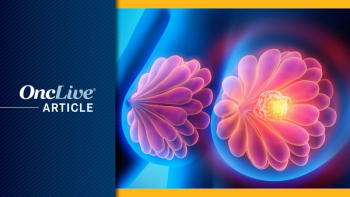
Fixed-Duration Ibrutinib/Venetoclax Provides Deep, Durable Responses in Frontline CLL/SLL
A fixed duration of ibrutinib plus venetoclax has demonstrated durable efficacy when used in the frontline treatment of patients with chronic lymphocytic leukemia and small lymphocytic lymphoma (SLL).
A fixed duration of ibrutinib (Imbruvica) plus venetoclax (Venclexta) has demonstrated durable efficacy when used in the frontline treatment of patients with chronic lymphocytic leukemia (CLL) and small lymphocytic lymphoma (SLL), offering a new approach that not only improves outcomes, but also quality of life, according to Paolo Ghia, MD, PhD.
Results from the phase 2 CAPTIVATE trial (NCT02910583), which were presented during the
“This study presents a new way of treating patients with CLL, because so far, we have only utilized continuous treatment,” Ghia said. “Having a fixed-duration treatment can be beneficial for our patients because it allows them to stop treatment after several months, which prevents long-term AEs and the possibility of the occurrence of mutations and resistance to the drugs.”
In an interview with OncLive®, Ghia, professor of medical oncology, director of the Strategic Research Program on CLL and the B-Cell Neoplasia Unit, Vita-Salute San Raffaele University, discussed the results of the phase 2 CAPTIVATE trial and the potential benefits of fixed-duration treatment in patients with CLL and SLL.
OncLive®:What was the rationale for the CAPTIVATE study with fixed-duration ibrutinib plus venetoclax?
Ghia: The rationale behind CAPTIVATE was to examine the synergistic effect between the BTK inhibitor ibrutinib and the BCL-2 inhibitor venetoclax. As we know, ibrutinib can release cells from the microenvironment and from the lymphoid tissue in the circulation, where they become more prone to undergo apoptosis. In that sense, the addition of venetoclax will induce apoptosis even further and will be much more effective with apoptosis in the cells. That will lead to the elimination of the leukemic cells, and in particular, the mobilization of the cells in the tissue where they are proliferating and expanding, which is really the culprit of the disease.
What was the design of this study? What methods were used to evaluate this regimen?
The study is made up of 2 parts. One is the MRD-guided cohort, where the treatment is modulated based on MRD status. The one presented at the 2021 ASCO Annual Meeting, however, is the fixed-duration cohort. Patients [in this cohort were] treated with 3 cycles of ibrutinib for debulking, and then 12 cycles of ibrutinib plus venetoclax, for approximately 12 months. By the end, all patients stop the treatment, regardless of MRD status.
What were some of the key findings from this study?
The combination of the 2 drugs for a fixed duration of time has proven to be very effective. The primary end point of the study was met, with complete remissions [CRs] observed in 56% of patients without deletion 17p, although the population of the study did also include those with high-risk genomic features. The study enrolled younger patients, those 70 years of age or younger, and they not only achieved high rates of CR, but also high rates of undetectable MRD, with 77% in the peripheral blood, and approximately 60% in the bone marrow. What is even more interesting is that we saw a PFS rate of approximately 93% at 24 months. This indicated that the responses can be durable, even in patients who did not achieve undetectable MRD.
Were any unexpected safety findings observed?
In terms of toxicity, no unexpected adverse effects [AEs] were reported. The most frequently reported grade 3 or 4 AE was neutropenia, which was reported in 33% of the patients. This was expected, because that is a common AE associated with venetoclax. [Neutropenia] can also be present with the use of ibrutinib monotherapy. Some patients also experienced diarrhea of a mild grade, which is a common AE of both drugs. Overall, the combination was well tolerated, with most AEs being grades 1 or 2, and only 3 patients of having to discontinue treatment with the combination due to AEs.
What are the next steps for this research?
We need longer follow-up. We do not expect that we will cure all patients. Some will have a durable and long-lasting remission, and others will progressively relapse. It will be interesting to characterize these patients from a genetic and biological point of view, so that we might improve their outcomes, either with the addition of other drugs or by prolonging treatment.
Reference
- Ghia P, Allan J, Siddiqi T, et al. Fixed-duration (FD) first-line treatment (tx) with ibrutinib (I) plus venetoclax (V) for chronic lymphocytic leukemia (CLL)/small lymphocytic lymphoma (SLL): Primary analysis of the FD cohort of the phase 2 captivate study. J Clin Oncol. 2021;39(supp 15):7501. doi:10.1200/JCO.2021.39.15_suppl.7501

























































































